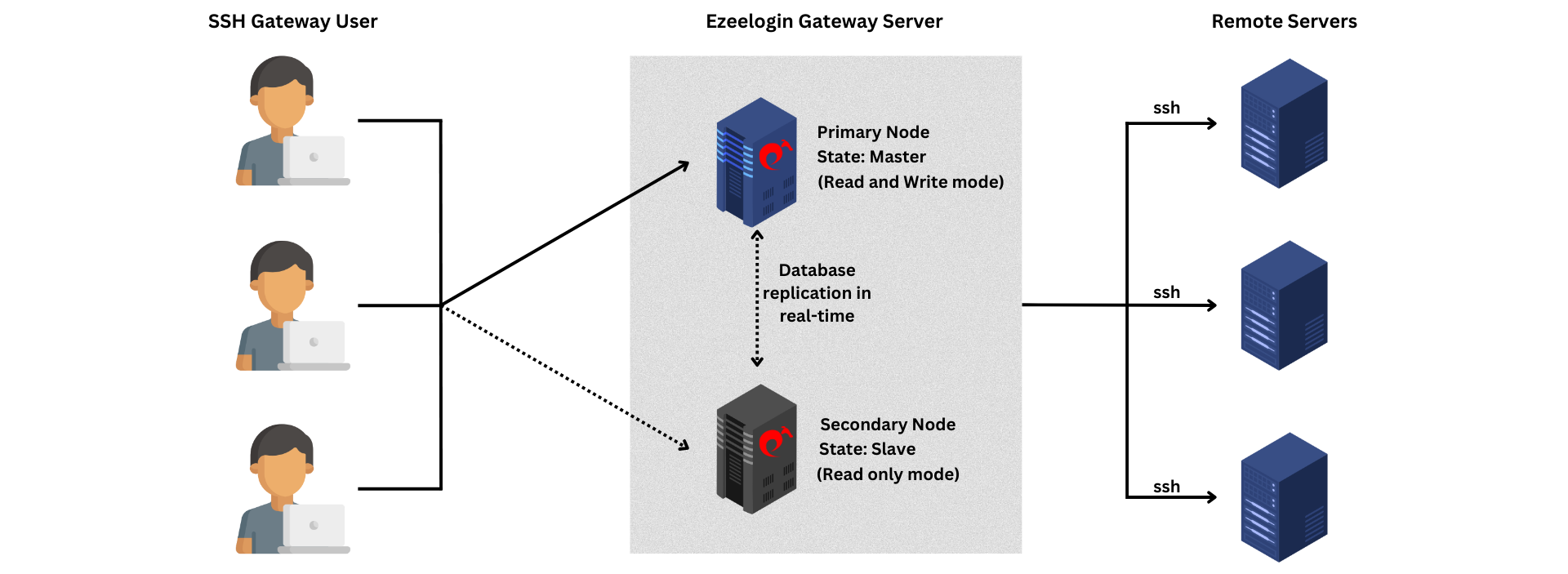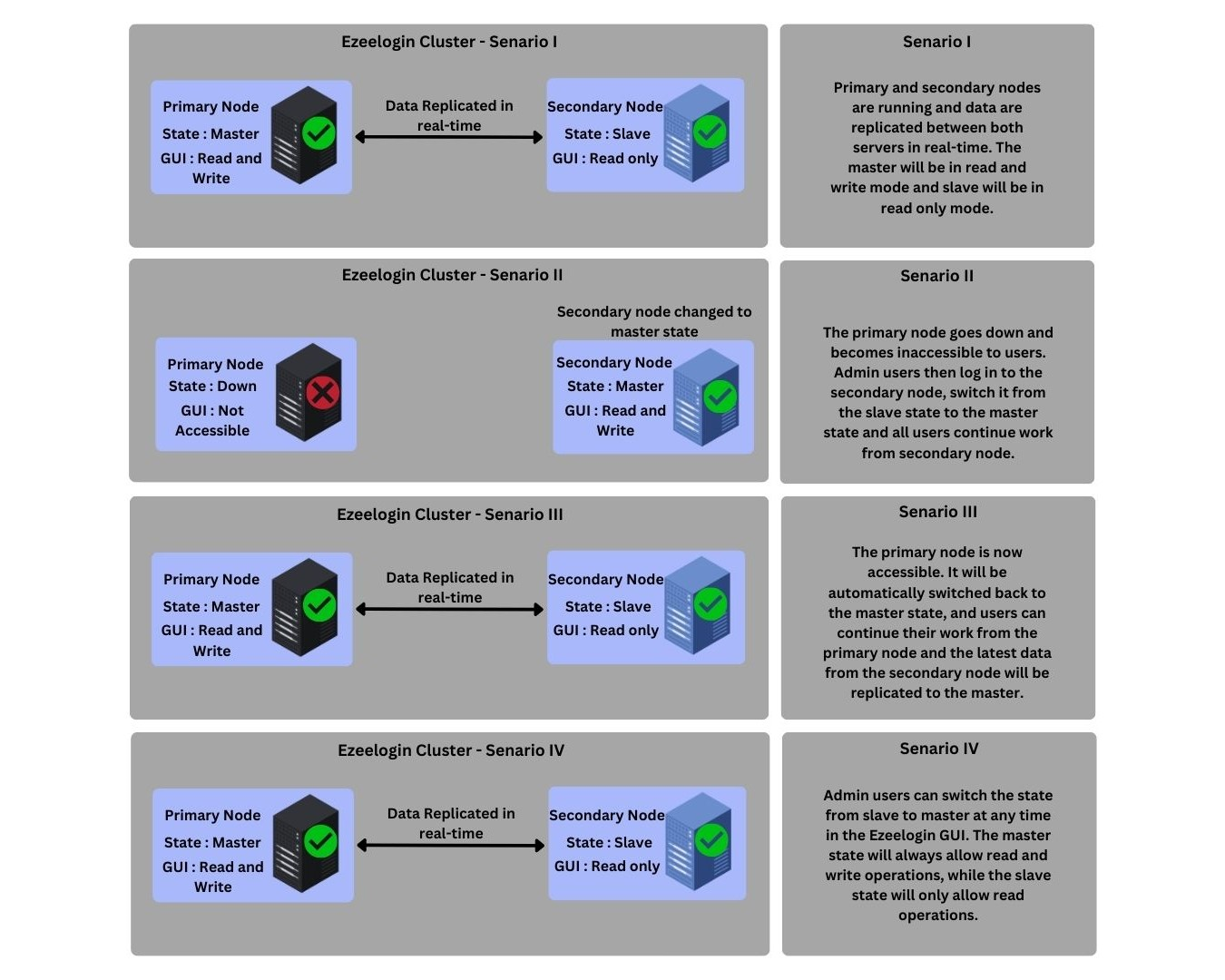Cluster Explained
Ezeelogin Cluster (Master-Slave) explained
Overview: This article helps in understanding the Ezeelogin master-slave or cluster setup for High Availability.


The master-slave setup is for High Availability (HA). Data between the master and slave is replicated in real-time. If the primary node goes down, admin privileged user can switch the secondary node to the master state and all users can continue to work from the secondary node. The node with the master state will handle read and write operations, while the node with the slave state will only handle read operations. When the primary node becomes accessible, Ezeelogin will automatically switch back to the master state in the primary node and data will be replicated from the secondary node. Admin privileged users can switch the state from slave to master at any time in the Ezeelogin GUI. The master state will always allow read and write operations, while the slave state will only allow read operations. The state will be changed according to the admin user's preference, but node states will remain unchanged throughout their lifetime.
FAQ:
1. Can we disable the slave server since we are currently using only the master node?
Certainly, the choice to disable the slave server is yours, but keep a note that data synchronization between the master and slave servers will not occur if the slave is disabled. It is recommended to keep both servers running and synchronized for real-time data updates, as changes made to the master server will automatically sync with the slave server.
Related articles:
Install slave / secondary node for high availability in the jump server
Switching node states in Ezeelogin Cluster